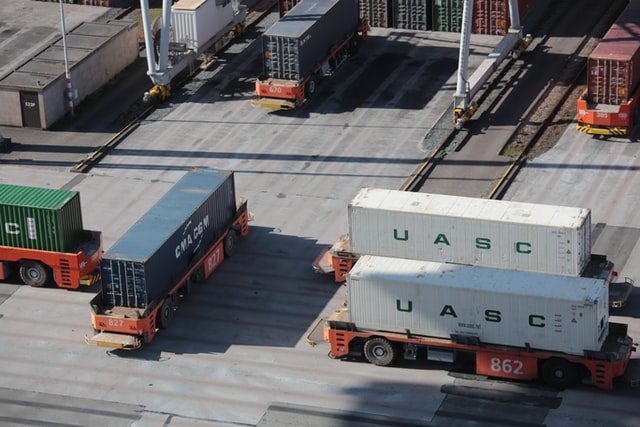PayPal (PYPL) has a heavy exposure to cryptocurrency. Some data show crypto comprises 67% of PayPal’s liabilities.
PayPal Holdings (PYPL) held $604 million in cryptocurrency on 31 December 2023, CoinTelegraph reports. Bitcoin (BTC) is PayPal’s largest crypto holding. The company had $291 in BTC on 31 December 2023. Ethereum (ETH) is PayPal’s second largest crypto holding.
CoinTelegraph estimates PayPal had $250 million in ETH on 31 December 2023. PayPal had $63 million in Litecoin (LTC) and Bitcoin Cash (BCH).
PayPal’s cryptocurrency holdings comprise blockchain assets purchased by customers through its platform, ihodl reports. Interestingly, PayPal’s cryptocurrency purchase volume fell from $690 million on 30 September 2022.
PayPal hopes to support as many digital assets as possible, Vice President Richard Nash says. Nash wants PayPal to support nonfungible tokens (NFT), stablecoins, and central bank digital currencies (CBDCs).
Does Cryptocurrency Threaten PayPal?
Skeptics will wonder if cryptocurrency market volatility can bring PayPal (PYPL) down.
For example, the Total Crypto Market Cap fell from $1.969 trillion on 13 February 2022 to $1.069 trillion on 11 February 2022, CoinGecko estimates. Similarly, the Total Cryptocurrency Market Volume fell from $60.246 trillion on 13 February 2022 to $48.124 million on 11 February 2023.
Moreover, the Total Crypto Market Cap hit a high $2.974 trillion on 13 November 2021, CoinGecko estimates. The Total Crypto Market Cap fell to $871.999 billion on 14 November 2022. Hence, the Total Crypto Market Cap lost $2.102 trillion in a year.
PayPal’s exposure to Bitcoin (BTC) could be even more dangerous. For example, Bitcoin’s Coin Price fell from $42,586.46 on 14 February 2022 to $22,213.56 on 14 February 2023. Hence, Bitcoin’s Coin Price fell by $20,372.90 in a year.
In comparison, Ethereum’s Coin Price fell from $2,933.73 on 14 February 2022 to $1,553 on 14 February 2023, CoinMarketCap estimates. Hence, Ethereum lost $1,380.73 in Coin Price in a year.
Bears will wonder if Cryptocurrency’s volatility could bring PayPal down.
Could PayPal (PYPL) Collapse?
A PayPal (PYPL) collapse could be catastrophic because PayPal had 432 million users in the third quarter of 2022, Statista estimates. Moreover, PayPal processed 19.3 billion transactions worth $1.25 trillion in 2021.
Frighteningly, many PayPal users are small business people and freelancers who use PayPal as their “bank.” PayPal’s level of use scares because the Federal Deposit Insurance Corporation (FDIC) does not insure PayPal accounts. Thus, all the money in PayPal accounts could vanish, leaving users with nothing.
That’s scary because some people use PayPal to pay for necessities such as groceries, rent, mortgages, fuel, and utilities. Some people use PayPal to feed their families.
If PayPal collapses, millions of people could have no money. Hence, we need to fear PayPal’s exposure to cryptocurrency.
I wonder if the Federal Reserve, or the US Treasury, will have to bail out PayPal if cryptocurrency brings it down. My prediction is the government will bail out PayPal if it collapses.
How Much Money is PayPal (PYPL) making?
Conversely, PayPal (PYPL) has been growing and making money. For example, PayPal’s revenues grew by 6.72% in the quarter ending on 31 December 2022.
Consequently, PayPal’s quarterly revenues grew from $6.918 billion on 31 December 2021 to $7.383 billion on 31 December 2022. Similarly, PayPal’s quarterly gross profit grew from $3.084 billion on 31 December 2021 to $3.13 billion on 31 December 2022. In contrast, PayPal’s quarterly income grew from $1.05 billion on 31 December 2021 to $1.244 billion on 31 December 2022.
PayPal has more cash. Its cash and short-term investments grew from $9.5 billion on 31 December 2021 to $10.868 billion on 31 December 2022. Similarly, PayPal’s Total Assets grew from $75.808 billion on 31 December 2021 to $78.717 billion on 31 December 2022.
How Much Cash and Debt does PayPal (PYPL) generate?
Interestingly, PayPal’s cash flow has fallen slightly. For example, the quarterly operating cash flow fell from $1.22 billion on 31 December 2021 to $1.157 billion on 31 December 2022.
However, PayPal’s quarterly Ending Cash Flow grew from -$1.94 billion on 31 December 2021 to $2.432 billion on 31 December 2022. PayPal (PYPL) can generate enormous amounts of cash. It reported a quarterly ending cash flow of $17.483 billion on 31 March 2022.
PayPal is borrowing money. It reported a quarterly financing cash flow of $1.312 billion on 31 December 2022. The quarterly financing cash flow grew from -$371 million on 31 December 2021. Consequently, PayPal’s Total Debt grew from $9.19 billion on 31 December 2021 to $10.417 billion on 31 December 2022.
PayPal (PYPL) has more value, but it also has more debt. I think skeptics are right to question PayPal’s exposure to cryptocurrency. Volatility in the cryptocurrency markets could hurt PayPal or bring it down. Smart investors will be leery of PayPal.
However, I consider PayPal a bargain at the $77.91 Mr. Market paid for it on 15 February 2023. I think PayPal could become a major player in FinTech because of its high payment volume. Thus, all FinTech investors to examine PayPal but fear its exposure to cryptocurrency.












